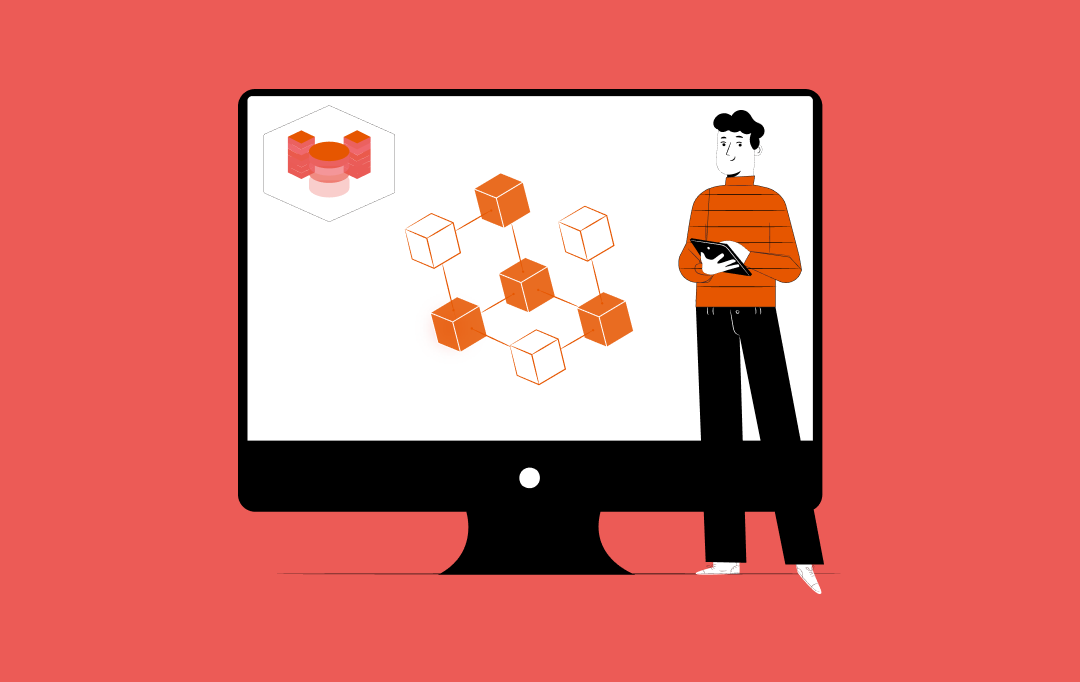- Lessons that Cardano blockchain has learned from Ethereum
- Architecture
- Consensus
- Approach
- What are Cardano smart contracts?
- How to create Cardano smart contracts?
- Pay
- Close
- Value, observation, and action
- Oracles
- If
- When
- Let
- Assert
- Why choose Cardano as your smart contract development platform?
- Where to use the Cardano smart contracts?
- Cross border payments
- Legal
- Gaming
Ever since the updation of the Cardano (ADA) network in September 2021, the blockchain platform has received the capability of creating smart contracts. The upgrade known as Cardano Alonzo has brought Cardano one step closer to truly becoming the “Ethereum Killer.”
Cardano blockchain, right from its launch in 2017, has been touted as the “Ethereum Killer” on the back of the premise that it improves the Ethereum infrastructure – with improvements like lesser fees, higher scalability, and better transaction speed and throughput. Now, by launching its own smart contract capability, Cardano has come in direct competition with Ethereum.
Before we get down to what the Cardano smart contracts consist of and how to build one, let us compare it with the platform enterprises have traditionally used to create and deploy smart contracts – Ethereum.
Lessons that Cardano blockchain has learned from Ethereum

The foundation of Cardano use cases is that it aims to be better than Ethereum. Now, in order to be that, it was important for the former to adopt some of the strong points that the latter comes with.
Architecture
The network is divided into two layers – CSL (Cardano Settlement Layer) used for ADA transfers and CCL (Cardano Computation Layer) used for creating ADA smart contracts. This separate activities-wise division makes running operations on both layers more efficient. On the contrary, Ethereum handled both smart contract and ETH transactions on the same layer, leading to higher fees and congestion.
Consensus
Cardano blockchain uses a proof-of-stake consensus mechanism known as Ouroboros that decides how the new transactions will be agreed upon and added to the blockchain. Here, the users don’t mine tokens; they follow a block-validation process by staking the native token – something that makes blockchain more energy efficient, cost-effective, and scalable.
Approach
Compared to other blockchain platforms, Cardano uses a scientific peer-reviewed process before releasing any new update, product, or service. This gives the developers confidence that when they create smart contracts on Cardano, they will be backed by documentation and industry-wide validation from other computer scientists and developers.
Now that we have looked at how Cardano use cases draw inspiration from Ethereum and act as its upgraded version, let us get down to the details of Cardano smart contracts, such as – what are Cardano ADA smart contracts, how to create Cardano smart contracts, and the Cardano programming language.
[Also Read: Cardano Price Prediction- Will This Crypto Asset Be As Big As Ethereum?]
What are Cardano smart contracts?
Cardano smart contracts, or ADA smart contracts as it’s commonly called, function similarly to the Ethereum blockchain. They act as virtual agreements that happen between two or more parties. In the approach, the outputs are executed when the prerequisite conditions are met – the outputs and conditions which sit on the Cardano ADA smart contracts.
The benefits of Cardano blockchain, which also reason out how to create smart contracts, range from:
- The absence of middlemen to maintain contracts
- When you create smart contracts, they lay on a decentralized network, meaning they are free from tampering
- Compared to real-world contracts, the execution of smart contracts is a lot faster
- With the data stored on a decentralized network, you can be rest assured that they are stored permanently, along with their backups
Now to build these highly efficient smart contracts, there are three Cardano programming languages that come into play –
Plutus – It is a purpose-driven smart contract development platform. It is powered by modern language research that provides a full-stack programming environment on the basis of Haskell, a leading functional language. Plutus comprises elements that run on the blockchain and some elements which run on the user’s machine.

Marlowe – It is a domain-specific language used to create smart contracts visually and through traditional codes. The Marlowe language has been designed to be embedded in both Haskell and JavaScript, offering the editors a choice in preference and skillset.
Glow – It is a new domain-specific language for creating decentralized applications on the blockchain. With the language, the developers can code secure dApps ensuring that the smart contracts operate safely in the adversarial environment.
How to create Cardano smart contracts?
There are eight steps that developers follow when they create smart contracts on Cardano. Let us look at them in detail.
Pay
The pay arrangement transfers a certain token value from the payee’s account to another account in the contract. In case there are insufficient funds, warnings get produced automatically, and a partial payment is made, while an edit in the contract gets made.
Close
This stage dictates how the Cardano smart contracts will get canceled. Here, the account owners are reimbursed through a single transaction after the values, actions, and observations are defined.
Value, observation, and action
Values are the numbers that vary over time, such as the balance of some token, slot number, etc. Observations are Boolean values that are obtained through a comparison of values and merged using the Boolean operators. Lastly, actions are the events that occur throughout execution – they can be money deposits, indications of some external worth, etc.
Oracles
Oracles are created for ADA smart contracts. They are modeled as the decisions that a participant takes through their special Oracle role known as “Kraken.”
If
When the conditional stands true, the If obs cont1 cont2 gets performed and continues as cont1 cont2 on the Boolean value in the observation obs.
When
It is a contract that gets triggered by the activities that could or could not occur at any point in time, and it is the cases in the contract that describe what happens when certain actions occur.
Let
The Let id Val cont function enables the smart contracts on Cardano to name a value within an identifier. Here, the expression value gets evaluated and then saved with the name id, while the contract gets extended as the cont.
The approach enables developers to use abbreviations and capture volatile data which might change over time in the Cardano smart contract development process.
Assert
The stage guarantees that the property holds at every point in the smart contract as the static analysis would fail if the execution results belong to a false assert.
So here are the eight stages of Cardano smart contract development, which have brought the answer to how many smart contracts on Cardano to over 3000!
With this, we have come to a stage where we know that Cardano is coming at par with other smart contracts platforms like Ethereum. But before you choose this as your next platform to answer how to create smart contracts, let us look into what makes it the right choice and the many use cases.
Why choose Cardano as your smart contract development platform?
There are a number of benefits that come attached with Cardano ADA smart contracts development. Benefits like:
- 70% of ADA being staked that offers a blockchain development company an excellent-grade network security.
- Marlowe’s programming language enables contracts to be written in finance instead of any general-purpose language. Since it is special-purpose, it is extremely easy to write, read, and understand the Marlowe contracts.
- Vasil hard fork, which is expected to be launched in July 2022, will expand the protocol and better the transactional processing’s throughput, which together would improve the functionality of the smart contracts.
- Lastly, factors like fast transaction speed and low fees make creating smart contracts on Cardano a smart choice.
Where to use the Cardano smart contracts?
Cardano ADA smart contracts find their use cases across a range of industries – Finance, gaming, real estate, and legal, amongst others. Let us look at them on a high level.
Mortgage
Smart contracts make it easy for mortgages to get automated while making the real estate process easy for the buyers and owners. To enable this, the Cardano smart contracts must be coded according to the mortgage agreements so that the processes can be executed automatically.
Cross border payments
Cardano smart contract helps with international goods transfer and payment initiations through the use of a Letter of Credit. It doesn’t just better the liquidity of the financial assets but also improves the financial efficiency across multiple stakeholders
Legal
Cardano-based legal contracts can be automatically executed through blockchain, making the process quicker to execute. Moreover, the smart contacts come with a 100% security guarantee at the back of low execution risk and less intermediaries.
Gaming
In the gaming landscape, the players are able to join the eSports team without having to go through lengthy physical paperwork processes. Moreover, the Cardano smart contracts would consist of information like the time played for a team, number of tournaments won, scores gained, etc., with the payouts automatically generated when some conditions are met.
So here were the many use cases that come attached with the adoption of Cardano for creating smart contracts. What is great about the platform is that it is directly answering all the shortcomings of Ethereum and even learns from the blockchain network. Although today we are standing at 300 contracts being made on Cardano, the number is only poised to increase over time. For a blockchain entrepreneur, this means that the time to enter the landscape through Cardano is now. We can help.
Get in touch with our team of blockchain developers today to initiate your smart contracts journey.


Excellence Together

The Rise of Blockchain in Digital Marketing - Benefits, Use Cases and Challenges
Blockchain technology is revolutionizing digital marketing by transforming strategies through its decentralized and secure framework. It provides marketers with unparalleled transparency in campaign tracking and data management, guaranteeing increased security and privacy for users. As the digital landscape is advancing at a fast pace, blockchain in marketing offers the digital marketers with the means to…

Blockchain Interoperability: The Key to Connect Siloed Blockchain Networks
Blockchain has been a revolutionary response for industries facing the growing pressure of centralized operations’ limitations. By building an ecosystem which runs on zero trust, the technology introduced the world with processes that were incredibly neutral, change-proof, and 100% transparent when compared to their predecessors - traditional computing environment. Having reached a stage where blockchain…











